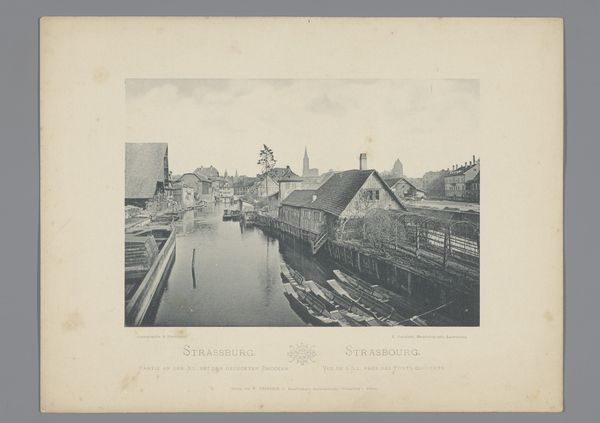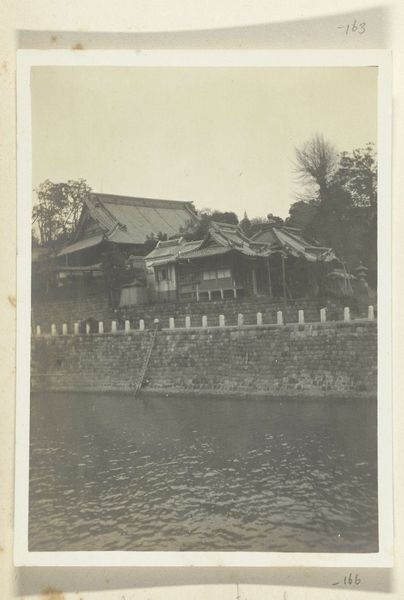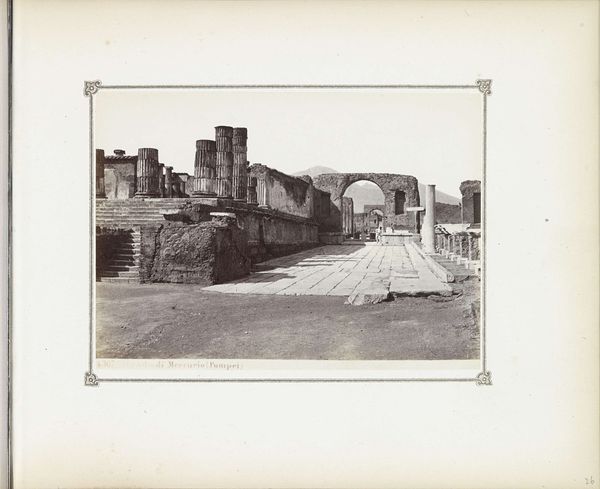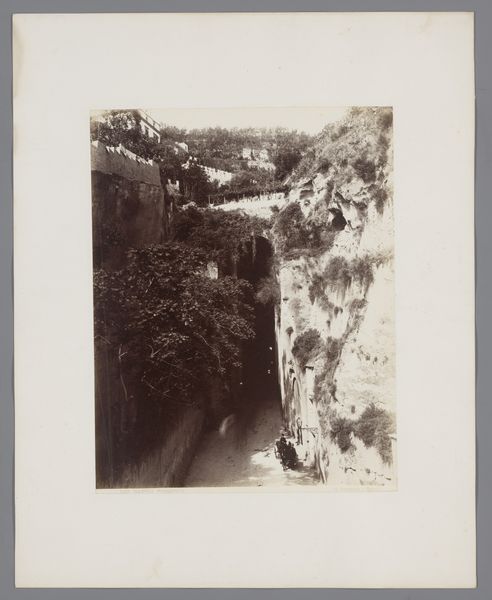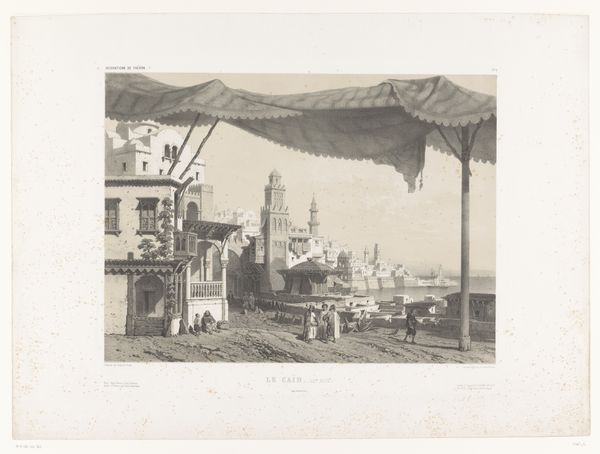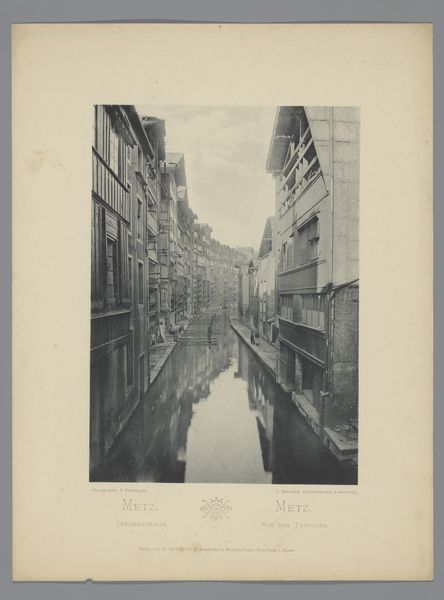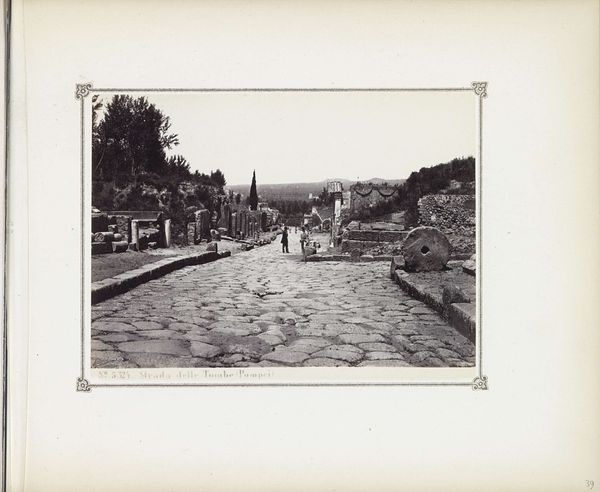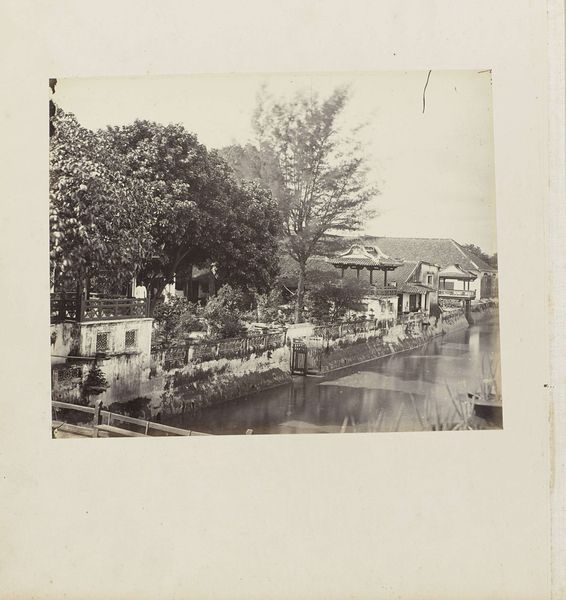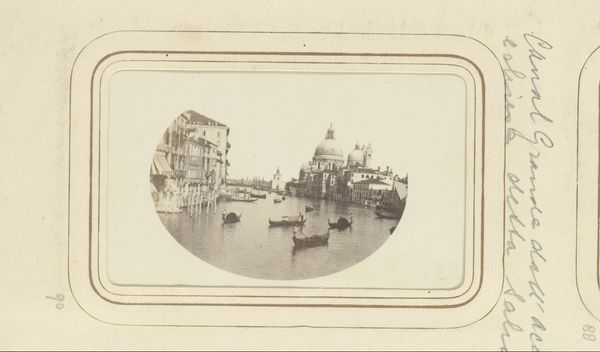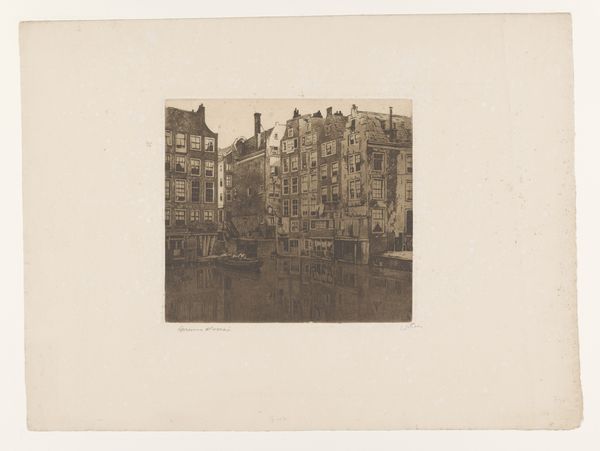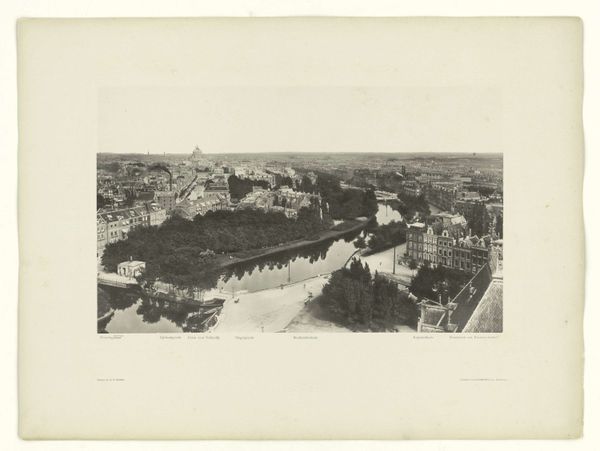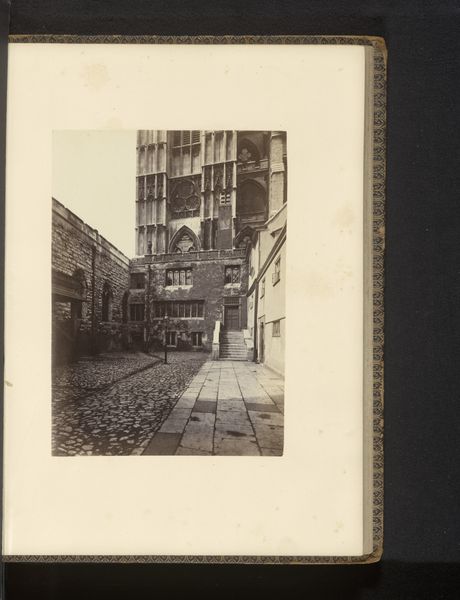
Gaanderij van de Borobudur (Boroboedoer), nabij Magelang, Nederlands-Indië c. 1895 - 1915
0:00
0:00
photography, gelatin-silver-print, architecture
#
asian-art
#
landscape
#
indigenism
#
photography
#
ancient-mediterranean
#
gelatin-silver-print
#
architecture
Dimensions: height 169 mm, width 229 mm, height 243 mm, width 329 mm
Copyright: Rijks Museum: Open Domain
Curator: This gelatin-silver print by Onnes Kurkdjian, likely taken between 1895 and 1915, captures a view within the "Gaanderij van de Borobudur (Boroboedoer), nabij Magelang, Nederlands-Indië." Editor: What strikes me immediately is the weight of history and symbolism emanating from these weathered walls. The rhythmic repetition of carved panels creates a palpable sense of sacred space. Curator: Precisely. And look closely at the materiality. This photograph shows how light interacts with the aged stone, each brick precisely placed. It speaks volumes about the labor involved in creating this vast temple complex in Java, a process deeply embedded in its cultural and economic context. The photographer, Kurkdjian, also adds his own context as his business traded in commodities across the region. Editor: Yes, and notice how the perspective draws our eyes along the corridor, lined with intricate carvings, hinting at narratives and beliefs far older than the photograph itself. These aren’t just decorations; each image, meticulously rendered, serves as a key to understanding a complex spiritual system. I can feel the immense weight of history held by those carvings. Curator: It's tempting to get lost in the artistry, but the materials themselves - the type of stone available, the tools used to carve it - tell their own story of cultural exchange and resource management within Dutch colonial Indonesia. What can be gained by considering these relics as evidence of colonial extraction? Editor: Undoubtedly. And in the carvings themselves we witness visual allegories of power dynamics; symbols employed to teach Buddhist principles or potentially even subtly undermine colonial influence through familiar, yet potent imagery. Curator: Thinking of photography itself, the capture of a cultural site through a specific technology transforms the monument into an item to be processed, a souvenir, and yet, this image becomes a piece of evidence that enables current generations to continue in discourse about these same materials, their usage, the conditions in which people made them and our access to all of these factors now. Editor: Ultimately, this photograph encapsulates the temple as an immutable symbol across eras of change. Looking into its image elicits a deep engagement in this ancient architectural tradition in Java. Curator: Yes, that resonates. For me, contemplating the image reminds me to reconsider not only the artistry of the carvings, but how historical, material processes were utilized, documented, and traded to disseminate these objects.
Comments
No comments
Be the first to comment and join the conversation on the ultimate creative platform.
